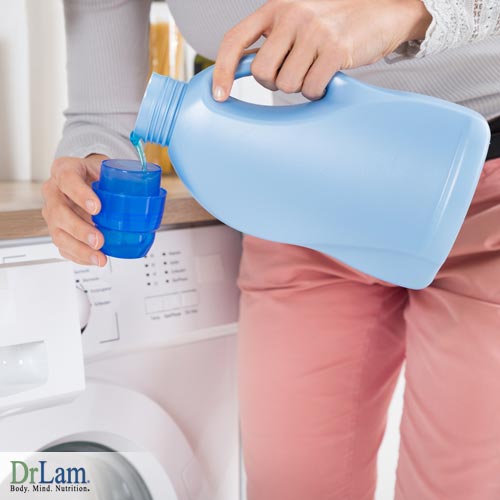 As products become more and more modified and processed, people are becoming more aware of what they purchase. There are hidden toxins and chemicals everywhere we turn. From our food to our clothes and even the air we breathe. In this article, we are going to be looking directly at carcinogens in laundry detergent and the harmful effects it can have on the body.
As products become more and more modified and processed, people are becoming more aware of what they purchase. There are hidden toxins and chemicals everywhere we turn. From our food to our clothes and even the air we breathe. In this article, we are going to be looking directly at carcinogens in laundry detergent and the harmful effects it can have on the body.
The only way to start avoiding these harmful chemicals is to educate yourself on what you should and should not purchase. This is the best way to look after yourself and your family. Laundry detergent is something that you use weekly and end up wearing on a daily basis. It can sit on your clothes and then seep into the skin, body, and organs.
The dangers of laundry detergents are real and that is because most manufacturers are not required to reveal every ingredient that is used in their products. The ingredients that they do list are usually vague. Chemicals are hidden behind complex words or secret numbers. This makes it very difficult to keep track of what toxins and chemicals you are using.
So let’s take a look at some studies that have researched the adverse effects of laundry detergent;
The University of Washington1 published a paper in the Journal Environmental Impact Assessment Review that discussed the volatile organic compounds that were found in multiple laundry detergents. These chemicals were not only found in laundry detergent but also in cleaning products, personal care products, and air fresheners. Unlisted toxins were found throughout all the products. The study also found that there were far worse effects on products with a fragrance than fragrance-free products.
Another study published in Air Quality, Atmosphere and Health2 conducted a study on three types of laundry cycles. Once without detergent, once with liquid detergent, and once with scented detergent and dryer sheets. They then studied the residual left in the clothing after the washes. They found over 25 volatile organic compounds including carcinogens acetaldehyde and benzene. These harmful carcinogens in laundry detergent can cause different types of cancer and are especially harmful to children and those who are pregnant.
Here are 6 ways in which Laundry Detergent can adversely affect your body:
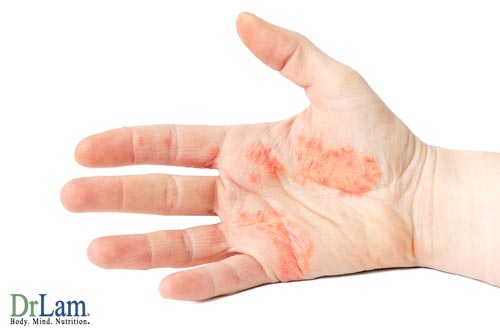 Our skin is like a sponge that absorbs everything that it comes in contact with. So when we use laundry detergents with harmful chemicals in them, our skin lets those chemicals sink in. This can cause skin dryness, redness or cause a skin disease like folliculitis or eczema. If left untreated, these skin irritations can lead to skin cancer.
Our skin is like a sponge that absorbs everything that it comes in contact with. So when we use laundry detergents with harmful chemicals in them, our skin lets those chemicals sink in. This can cause skin dryness, redness or cause a skin disease like folliculitis or eczema. If left untreated, these skin irritations can lead to skin cancer.
A common ingredient in laundry detergent is Phthalates. This chemical is known to cause deformities in the reproductive system. Studies have shown that this chemical affects mainly men by reducing their sperm count and creating deformities in the testicles. Studies have also shown that carcinogens in laundry detergent can harm an unborn child. A fetus absorbs whatever the mother is exposed to, so it is very important for a pregnant woman to stay away from harmful detergents and just use natural ingredients.
Laundry detergents that have a fragrance are far worse than fragrance-free detergents. They usually have more toxins than other products. So when we breathe in these chemicals, whether it is the smell on our clothes or the smell directly from the product, this can cause headaches. Too much of this smell can also trigger migraines.
Many detergents have the chemical Nonylphenol Ethoxylate, also known as NPE. NPE is actually a toxin that imitates the estrogen hormone. The hormones in our body are very important to maintaining overall health. They maintain reproductive health, emotions, and weight control. So when hormones are disturbed by toxins this can have a detrimental effect on our overall health.
The Environmental Working Group has made it clear that fragrances are one of the top five allergy triggers. Fragrances can cause asthma attacks and swelling. The chemical phthalates are the main cause for these triggers and it has also been linked to diabetes, obesity, and poor reproductive health.
It might be hard to hear but yes, the carcinogens in laundry detergent have been linked to cancer as well as other life threatening diseases. Did you know that in America the rate of people being affected by some form of cancer has increased to 1 in 3? It used to be 1 in 100! However, with so many chemical and toxins everywhere we turn, the rate has drastically increased. To reduce your chances of developing a lifelong disease, reduce the amount of chemicals and toxins to which you are exposed.
There are 8 toxic chemicals that you should watch out for when choosing a laundry detergent:
The word fragrance actually indicates hundreds of chemicals combined to make ‘lavender’ or ‘orange’ smell. These chemicals do not aid in cleaning but only in the smell of your washing. Don’t be fooled by the smell, the smell of your clothes does not determine how clean they are. Fragrances can cause allergies and other breathing problems. So instead stick to essential oils in your laundry.
One of the cleaning agents that you will see in most laundry detergents you will find on the shelf is petroleum distillate or naphtha. This chemical comes from synthetic crude oil and it has been linked to damage of the mucous membranes, lungs and has shown to cause inflammation, asthma, and cancer.
Phenol is similar to naphtha except even more harmful to the body. Some people are extremely allergic to the substance and when exposed to it, it can cause death. This substance spreads through the skin and damages blood vessels, organs, and the nervous system.
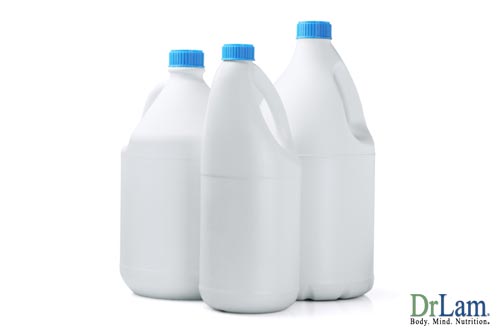 Bleach or sodium hypochlorite has extremely toxic properties. Many people have died from being exposed to bleach in the house. Usually, bleach is handled with gloves and a mask, but people use it regularly without any protection for household cleaning tasks. Bleach is corrosive and it can harm the skin, eyes, and esophagus. If swallowed, bleach will cause life long damage. Bleach is a carcinogen within laundry detergent and has been linked to throat and breast cancer.
Bleach or sodium hypochlorite has extremely toxic properties. Many people have died from being exposed to bleach in the house. Usually, bleach is handled with gloves and a mask, but people use it regularly without any protection for household cleaning tasks. Bleach is corrosive and it can harm the skin, eyes, and esophagus. If swallowed, bleach will cause life long damage. Bleach is a carcinogen within laundry detergent and has been linked to throat and breast cancer.
Dioxane is a cheap chemical that softens fabric. Manufacturers are not required to list these ingredients but it is a known carcinogen in laundry detergent. This chemical is very toxic and it is slowly contaminating public water.
Phosphate is the chemical that breaks down dirt and grime. It enhances the cleaning process. They work great for cleaning but they also continue working once flushed into the water system. An increased level of phosphate can cause rivers and lakes to turn toxic and kill a lot of plant and animal life.
EDTA is similar to phosphates in that it is mainly toxic when flushed into water systems. It damages animal DNA and can lead to mass fish deaths. It does not break down easily and can, therefore, stay active for a very long time.
Nonylphenol Ethoxylate is actually a banned substance in Europe and Canada but it can still be found in much of the United States. NPE has many adverse effects including hormone damage, hindered cell growth, and increased risk of cancer.
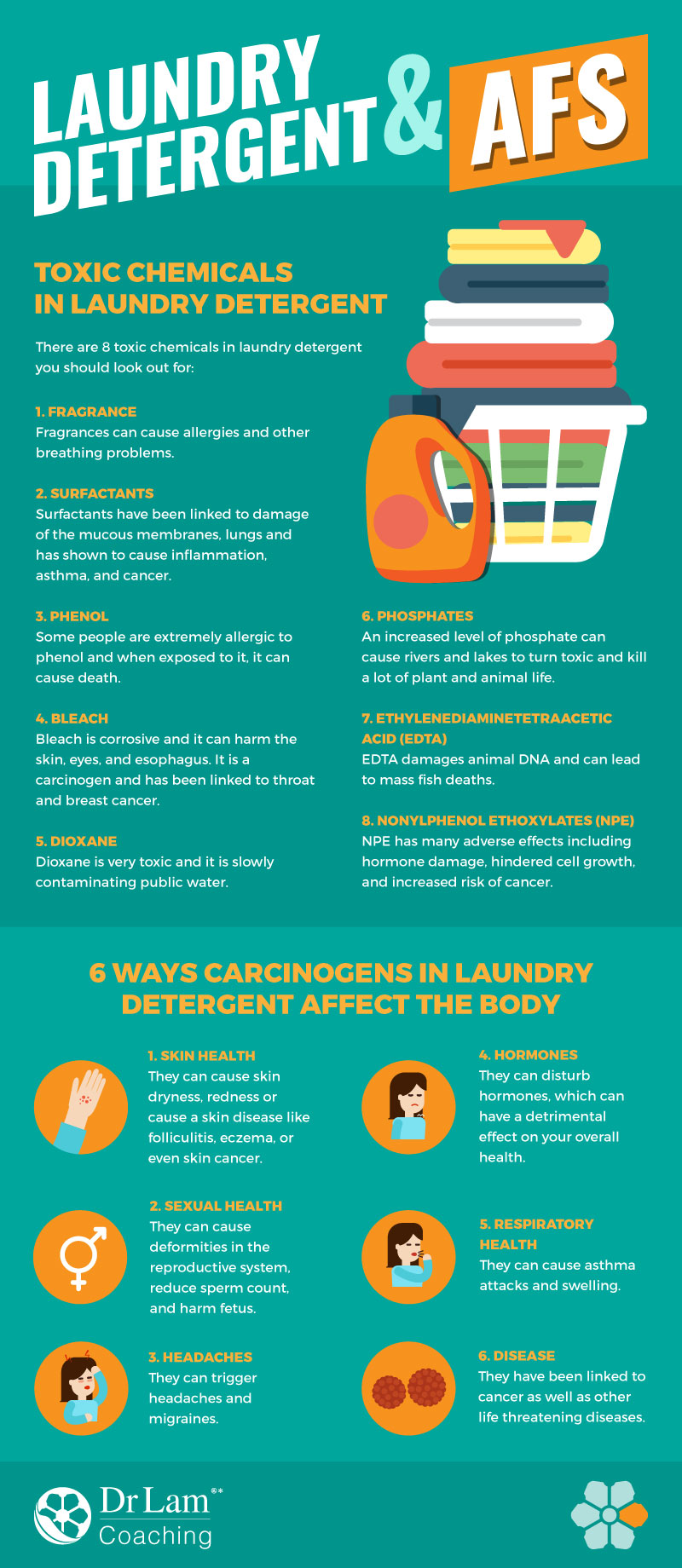
The liver is one of our largest organs and it plays a very important role in the body. Its main role is to detoxify toxins and chemicals as well as drugs that come into the body.
The liver plays a key role in the NeuroEndoMetabolic (NEM) Stress Response. NEM Stress Response is the way that our body handles stress. An unhealthy liver can lead to many problems causing the body to become stressed. This internal stress can also translate into external stress.
The liver can detoxify many chemicals but not everything. The liver struggles to detoxify the chemicals, toxins, and carcinogens in laundry detergent. When we use a harmful laundry detergent and it seeps into the body through the skin, the liver must process these chemicals. This puts a lot of pressure and stress on the liver, which in turn reduces the NEM stress response.
Plus, if the liver is not functioning at 100 percent then the body struggles to cope with external stresses -- like work stress or financial stress. This also reduces the NEM stress response. It is true that the adrenal glands mainly cope with stress, but the whole body must be healthy to combat stress. Laundry detergents only hinder your health.
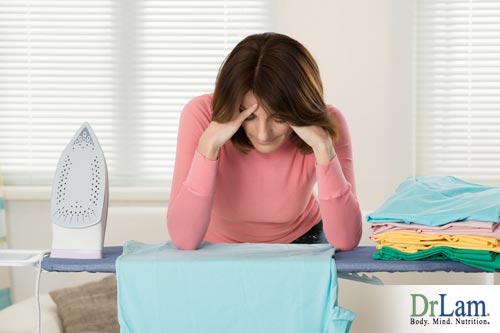 Carcinogens in laundry detergent can cause many problems within the body. One major problem is that all the chemicals may lead to Adrenal Fatigue Syndrome (AFS).
Carcinogens in laundry detergent can cause many problems within the body. One major problem is that all the chemicals may lead to Adrenal Fatigue Syndrome (AFS).
AFS is a combination of symptoms that occurs when the adrenal glands are not functioning at their normal levels. This usually occurs after a prolonged period of extreme stress. It can also come about after chronic exposure to toxic materials in laundry detergent. As you can imagine, due to high amounts of pressure within this 21st-century society, many people experience some form of AFS. When we are stressed the adrenal glands cannot produce enough of the right hormones to counteract the stress leading to chronic fatigue.
One of the main symptoms of AFS is obviously fatigue. This fatigue occurs even after you sleep a number of hours; you still feeling extremely tired. Other symptoms include food cravings, trouble concentrating, and inability to finish tasks.
The chemicals, toxins, and carcinogens in laundry detergent can have many negative effects on the body. As you would have read above, ingredients like NPE and phthalates can impact our hormones, especially our reproductive hormones in both men and women. Two of the most important hormones that these laundry detergents can affect are cortisol and adrenaline levels. When adrenaline is released it increases your heart rate and your blood pressure, thereby increasing your energy supplies. Cortisol, on the other hand, is our stress hormone. It boosts glucose in the bloodstream leading to tissue repair. Dysfunctional cortisol levels can also have some side effects including an impaired immune system and digestive system. The harmful chemicals in laundry detergents can lead to an increased level of adrenaline and cortisol, which can cause Adrenal Fatigue Syndrome.
If you already experienced some form of fatigue then you need to stay away from the chemicals, toxins, and carcinogens in laundry detergent. Instead, try one of our all-natural homemade laundry detergent (carcinogen free) recipes. These recipes are easy and quick to make and you most likely already have the ingredients at home.
So now that you have educated yourself on the harmful effects of carcinogens in laundry detergent on your health, it's time to think about some alternative. There are many alternative options that are safe for the whole family.
The first thing you need to do is clear your house of all products that you think might be affecting your health and your family’s health. That includes most common house cleaning products and instead use some of these ideas to help your clothes stay clean and fresh.
Fabric Softener: Instead of using a chemical fabric softener, throw one half cup of white vinegar into your rinse cycle. You might think that there would still be a smell afterwards but you will be pleasantly surprised that after the wash, there will be no smell. Vinegar or otherwise!
Stain Remover: Stains are always a pain, especially for parents with children, and so you might be tempted to turn to the chemical stain remover. However, try this stain remover first and you will definitely be happy with the results. Mix washing soda with baking soda and water and then place onto the stain for a few hours before throwing it into the machine.
Fresh Fragrance: Everyone enjoys the fresh smell of the laundry detergents that you buy at the supermarket. However, many of them are very harmful and so instead add 2 to 3 drops of good quality essential oils to your load.
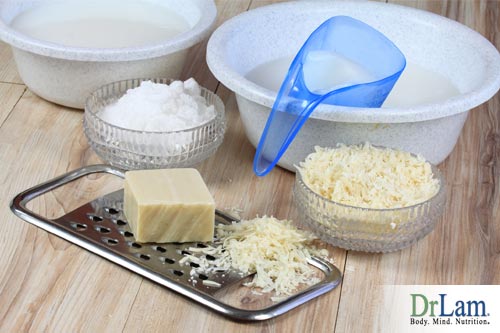
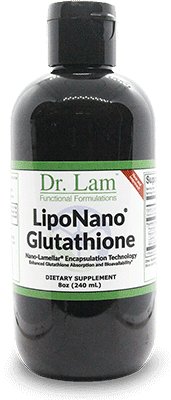
Most effective antioxidant that works on liver clearance
If you buy laundry detergent off the shelf at your local supermarket then most likely there are carcinogens within the product that are not labeled and you don’t know about. Learn more about what is lurking in your detergent by reading the article.